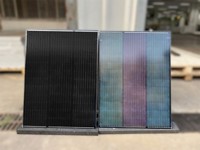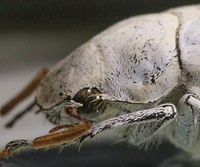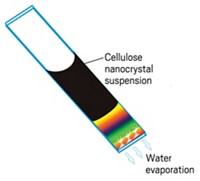Advertisement
Grab your lab coat. Let's get started
Welcome!
Welcome!
Create an account below to get 6 C&EN articles per month, receive newsletters and more - all free.
It seems this is your first time logging in online. Please enter the following information to continue.
As an ACS member you automatically get access to this site. All we need is few more details to create your reading experience.
Not you? Sign in with a different account.
Not you? Sign in with a different account.
ERROR 1
ERROR 1
ERROR 2
ERROR 2
ERROR 2
ERROR 2
ERROR 2
Password and Confirm password must match.
If you have an ACS member number, please enter it here so we can link this account to your membership. (optional)
ERROR 2
ACS values your privacy. By submitting your information, you are gaining access to C&EN and subscribing to our weekly newsletter. We use the information you provide to make your reading experience better, and we will never sell your data to third party members.
Materials
Beetles inspire bright white coating
Cellulose nanofibril material could someday replace titanium dioxide
by Katharine Sanderson
March 16, 2018

The whiter-than-white Cyphochilus beetle scuttles around Southeast Asia, scattering light with its bright white shell. Now, this small critter has inspired a group of chemists to make their own plant-based ultra-white material.
The team, led by Silvia Vignolini at Cambridge University, UK, used cellulose to make their material. In doing so, they claim to have created a biodegradable, biocompatible light-scattering material with the potential to replace pigments like titanium dioxide, which are being scrutinized with regard to environmental impact, in sunscreens or paints (Adv. Mater. 2018, DOI:10.1002/adma.201704050).
The beetles’ whiteness is due to a random network of densely packed chitin fibrils that is able to strongly scatter light, Vignolini explains. This architecture inspired her to try a different approach to making white materials; both titanium dioxide and most new materials in development have spherical features instead. “Seeing this beetle made us understand we should go into fibrils rather than spherical scatterers,” she says.
To mimic the beetle shell, Vignolini’s team used nanometer sized fibers of cellulose. These cellulose nanofibrils are tough, abundant and renewable, yet so far have been investigated only for making transparent materials by compressing them into films.
But when they aren’t compressed, the nanofibrils form membranes with very different optical properties. The random nature of the nanofibrils introduces pores of different sizes, and allows light to be scattered efficiently, making the membranes appear white.
Vignolini’s group separated the nanofibrils according to diameter using a centrifuge. Membranes made with the thinnest nanofibrils were more densely packed and less able to scatter light than the membranes made from fibrils with a mixture of sizes. Their best material, which had a carefully-selected range of sizes but a random distribution of fibrils, was able to scatter light up to 30 times more effectively than standard filter paper, a well-studied medium that contains whiteners.
The finer points of the light-scattering mechanism are still being worked out, Vignolini says. The next step will be to hone the theory so that a material can be designed to make the most of the scattering, she says.
“The improvement over standard filter paper is remarkable, and the environmental benefit of not introducing other agents such as titanium dioxide is clear,” says Steve Eichhorn of the University of Bristol, who wasn’t involved with the study. “The challenge would be to now see how this might be achieved at-scale commercially,” he adds.





Join the conversation
Contact the reporter
Submit a Letter to the Editor for publication
Engage with us on Twitter